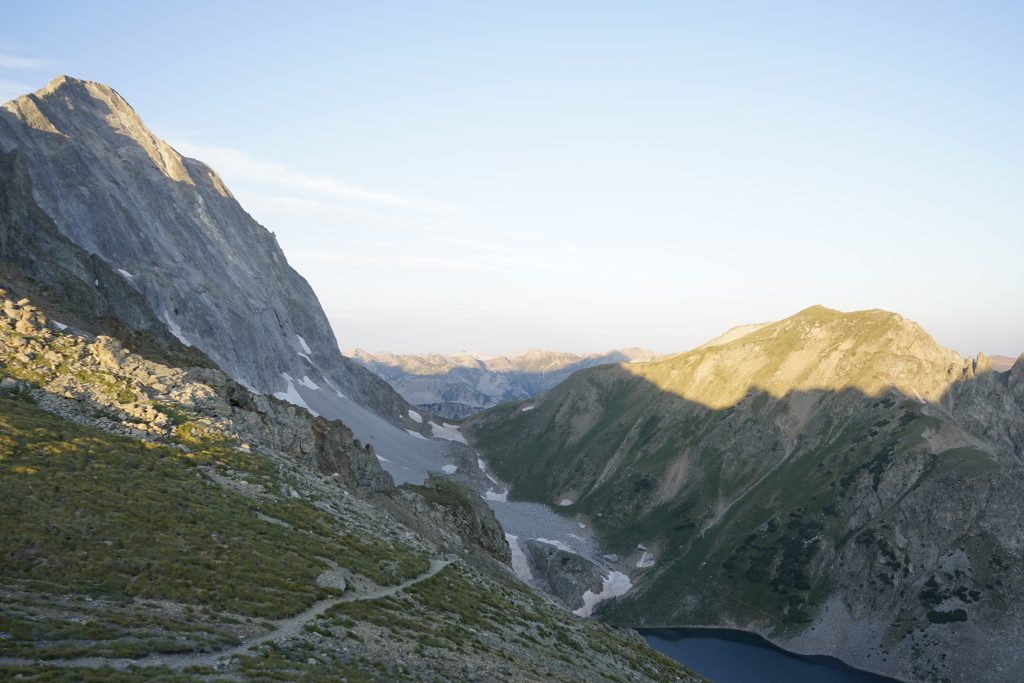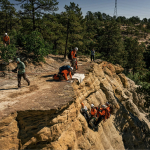Stranded, injured climber rescued on Capitol Peak

Beau Toepfer/The Aspen Times
Mountain Rescue Aspen has successfully rescued a climber on Capitol Peak after they were reported “overdue” by the other member of their party.
Pitkin County Regional Emergency Dispatch received the initial 911 call reporting the climber at approximately 6:52 p.m. Friday, Aug. 15. The reporting party, referred to as “Climber A” in a press release, stated that after reaching the Capitol-Daly saddle, they and their partner, “Climber B,” decided to separate. While Climber A remained behind, Climber B continued toward the summit.
“It’s definitely not a safe way to go,” Parker Lathrop, chief deputy of operations for the Pitkin County Sheriff’s Office, told The Aspen Times. “The buddy system works.”
Pitkin County Sheriff Michael Buglione pointed out that when two party members separate on a mountain and one on goes ahead, there’s no ability for the person who summitted to discuss the way down with anyone as they descend.
“One of the rules of hiking is you never leave your party,” Buglione said. “Always stay together. If someone doesn’t want to climb it … there’s another day you can do it together.”
The two climbers had agreed to reunite at the saddle within five hours, the press release states. When Climber B did not return within that timeframe, Climber A then descended in search of help.
Climber A hiked out toward the trailhead. On his way, he encountered two individuals hiking to camp at Capitol Lake and borrowed their phone to call for emergency assistance.
The all-volunteer Mountain Rescue Aspen was notified and made phone contact with Climber A to obtain information and develop a search strategy. During this time, Mountain Rescue Aspen also received a text message from one of the campers who had lent Climber A a phone, confirming they heard cries for help from the north side of Capitol Peak above Capitol Lake.
Further communication with the campers was then lost, according to the press release.
Mountain Rescue Aspen deployed a ground team to Capitol Lake at approximately 9:51 p.m., searching on foot for the climber. At the same time, Mountain Rescue Aspen coordinated with the Colorado Search and Rescue Association to request aerial assistance from the Colorado National Guard’s High-Altitude Army National Guard Aviation Training Site, which is based in Gypsum, Colorado, at first light.
Due to the uncertainty of the climber’s exact location, CareFlight of the Rockies was also requested to conduct an aerial reconnaissance mission using night-vision goggles at 4 a.m.
“Unless it’s a critical event, if we can wait overnight until we do have some sort of daylight, that’s the preference,” Lathrop said of the requested flights. “Night always increases the risk.”
The ground team made contact with Climber B at 4:16 a.m., relaying the approximate location to HAATS and confirming the climber was injured. When HAATS launched, they were then able to go right to the climber’s location.
According to Lathrop, the climber “was not on the standard trail” and had both a minor physical injury and what Lathrop labeled as “environmental” injuries from being outside all night. Buglione confirmed those injuries included cold exposure and dehydration.
At first light on Saturday, Aug. 16, HAATS airlifted hoist rescue technicians from Aspen to the location of the climber, who was successfully hoisted from the peak and evacuated for medical care.
All team members were out of the field by 10 a.m. Saturday. In total, 21 Mountain Rescue Aspen personnel were involved with the mission, totaling 265 volunteer hours.
Mountain Rescue Aspen and the Pitkin County Sheriff’s Office remind all Capitol Peak climbers that there are no shortcuts to the standard route to and from the summit.
“People think there’s a shortcut down,” Buglione said. “There’s only one way up and one way down.”
Buglione remembered that in 2017, five people died on Capitol Peak in a six-week period. Of those five, reports indicated that all but one had to do with climbers who were off the standard route.
“Four out of those five perished,” Buglione said, “because they thought there was a shortcut.”
Asher on Aspen: ‘No Place’ I’d rather be
Buttermilk Mountain was unrecognizable this weekend — not the powder-white shrine of winter, but a sprawling, musical creature alive with strangers, sound, and the reckless energy of a first-time festival.









